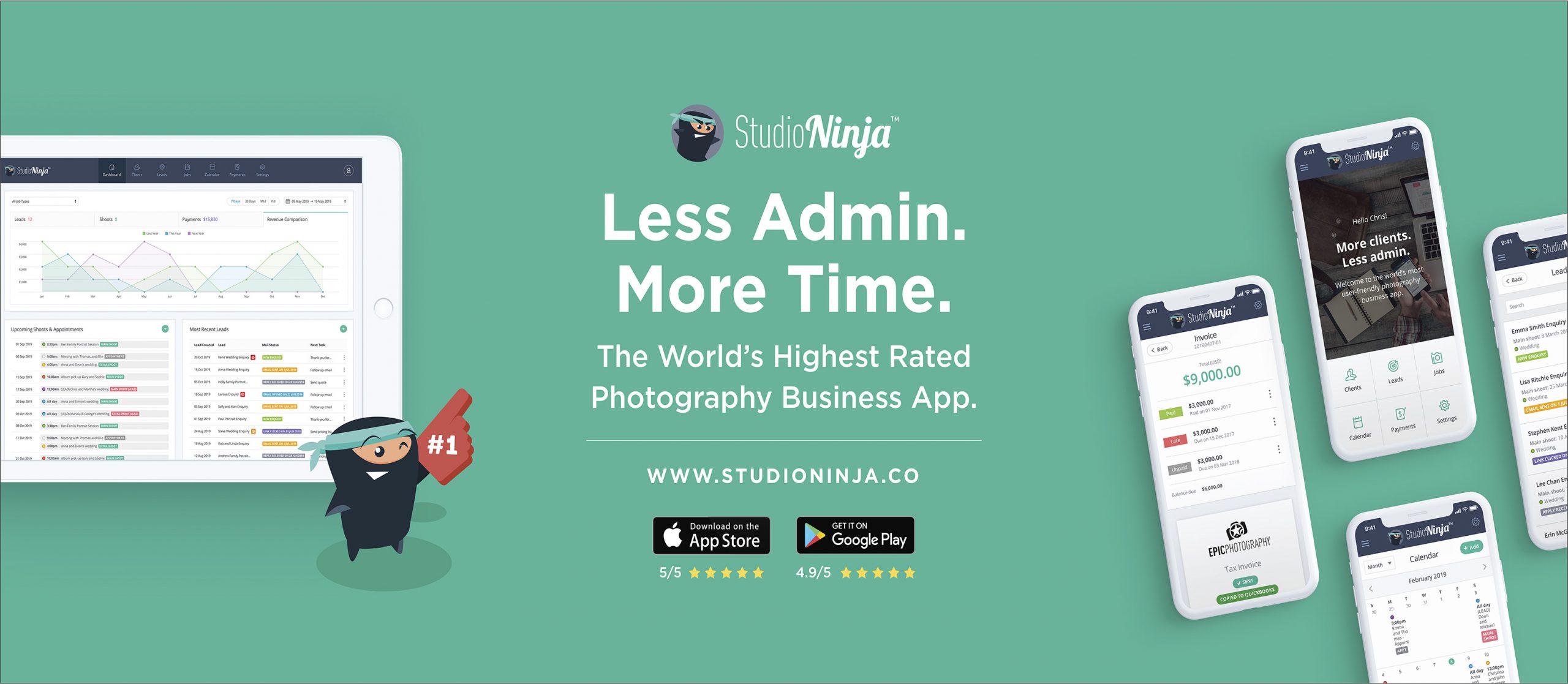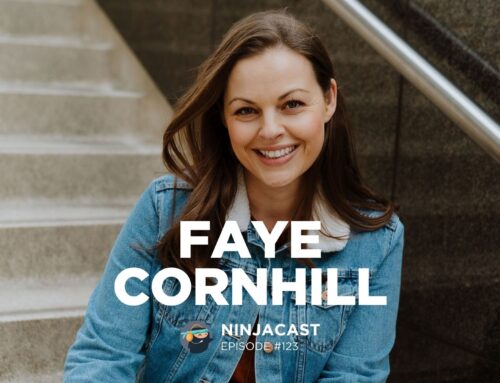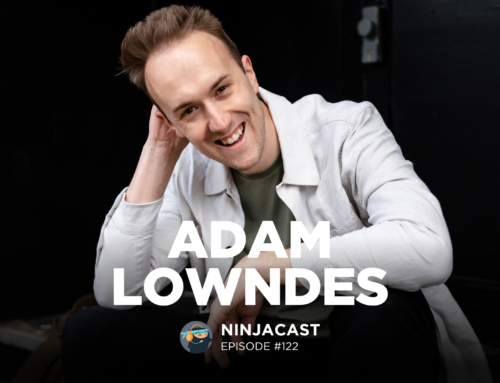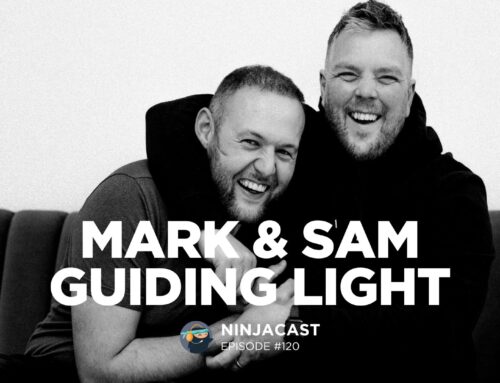025: Andy Hardy – Film Making Hot Tips & Why Being A Good Person Is Your Best Business Tool
April 10, 2021.
“Be a good person. Be Kind. Treat Everyone with Respect”
ANDY HARDY
Hey everyone! It’s Sally here, from Studio Ninja. Today’s episode is all about Andy Hardy of Felan Films & Moments In A Minute.
Check out some of the biggest points from Andy’s interview below:
What made you choose film?
Totally. I guess you’ve got to go back to my wedding days. When I was shooting weddings, I shot well over 100 weddings between my own and the second shooting with people. I was just loving shooting so much. I’m a real paper person, so I love getting to go and hanging out with 100 different people every week. I was like, “I’m living my best life.”
I actually studied three years at Photography Studies College in Melbourne. About a year in, I started second shooting weddings for people. I met my mentor and one of my best mates, Jesse Hisco, and I learned so much from him. Then he just introduced me to so many other people in the wedding industry. A year or so went by. A couple of years went by. I think I’d graduated uni and it was probably a year out or something. I was lucky enough to shoot all these different, beautiful, awesome weddings up and down the coast and had some incredible experiences and really beautiful, wonderful clients that I’m super grateful to have gotten to work with, but one time, basically, Jesse just said to me, he said, “Hey, man. I’ve got this couple. They’re a really cool couple, whatever.
They’re just having a small intimate wedding here in Melbourne, but they seem really rad. Can you do video?” I was like, “Yeah, I can do video. No problem.” I couldn’t do video. I had no idea. He was like, “The wedding is in three weeks.” I’m back on my computer, how to do video. YouTube is the absolute … YouTube has so much stuff about it. I just went on a spree of learning how to do it. We had done a module half a semester at university, on making films, making videos, and using Premiere and stuff. I self-taught myself all this stuff shot. I shot this awesome wedding in Melbourne. It was just super tight-knit, just both the folks, one of the brothers. The brothers of the groom were there and that was it. They just had a marriage registry. We shot the wedding and it just turned out really beautiful.
Basically, they said, “Hey. Do you want to come to Bali? We’re actually having another wedding and we’re flying in all of our friends from China and all of our friends from University of Melbourne to come to Bali for this wedding. We’re going to get married in a glass church on the edge of a cliff and we want you to shoot a video for it because you did a really amazing job. Can you come? Will you come?” I was like, “Let me just check my schedule. Yes, I can definitely be there.” Basically, my second ever wedding film was one of the most incredible destination weddings. You could imagine. After that, I just went on this super snowball effect of booking destination wedding films. We shot films in Thailand and Bali.
We were fortunate enough to shoot a wedding in Kerala, in India, in Canada, and in the States, just floating about all over the place, shooting wedding films. My love for video just grew and grew and grew. It was just this way. I think that’s where the name Fēlan Films came from, in my commercial sphere. I fell in love with that feeling that you can create through cinema, which is … I’m not saying you can’t do it in a photograph, but I think that love of watching movies and stuff and that feeling you get when the hairs stand up on your neck or something. You get the pins and needles effect of watching something where visuals and music connect so much that you can’t help but feel something from it.

What are your tips for people that are thinking, “I really want to start getting into filming? How do I even start? Where do I begin?”
That’s a really good question. I think that there’s really nothing better than just trying and just getting out there, and just hitting record, whether it’s just you shooting your friends. For me, I guess photography all started when I was photographing my friends skateboarding and riding BMX when I was young, running around in high school, and stuff. That’s how photography started for me. I really threw myself in the deep end, committing to a full wedding film. I wouldn’t highly recommend that. I wouldn’t say go out and just do that straight off the bat.
I was really lucky. In a sense, it just actually came down. There’s been plenty of films that haven’t panned out with, not so much professionally for clients. Clients out there, please, if you’re listening to me, that doesn’t happen often. I guess, I think just picking up the camera and hitting record and thinking less about all the gear, that’s something that I’ve been talking about at an amazing camp and conference, Field Trip, that I’ve been traveling out to and managed to just snowball into, again. I went and shot a film and then ended up teaching video there for five years.
One of the key things with any of my videos, stuff that I’ve ever taught or shown anyone is just stop thinking about all of the gear and just focus on the story and creating. Pick up the camera. Sony mirrorless cameras are now so incredible. You’ve got in-body stabilisation. Most mirrorless cameras now have that. You can run around and shoot in any moves that you would otherwise need all this equipment, a jib, cinema jib where you want to raise the camera up or do a slider move from side to side. You can do that with your hands, a bit of practice, a good camera strap, getting that three points of contact, having the camera strap around your shoulder or neck or whatever, and then your two hands on it and being able to focus and move your body. Practice makes perfect. No one ever learned to ride a bike by watching a video. Well, maybe they did. I don’t know. Maybe I’m not 100% on that.

For the videographers that want to take their work to the next level – they want that wow factor, those epic shots that really stand out from the crowd – what would you say they can do?
That’s actually one of my favourite things, is watching people’s style develop. Getting started, I think there’s nothing that beats going out and doing it. I think that’s a bit cliché to say, but honestly, like I said, stepping back from thinking, “I need all the gear. I need the stabiliser and a mic and whatever.” If you have a camera, even if you have an iPhone, these things are incredible. You could shoot 4k video on this and 100 frames a second. If you want to do slow motion stuff, you can do it on your phone. I’ve seen incredible films made on iPhones. That next level, I think this is the hardest part. It’s like learning to scale snowball. That first part, you’re like, “Oh.” That happens really quickly, that progression, but then that next level of taking it to the next level and being like, “Oh.”
People walk away from the film or some people see something that I’ve created for a brand or whatever and messaged me like, “Did you make this thing for this company?” I’m like, “Yeah. I actually did.” That’s super cool, to have my style be recognised by somebody. Prominently, they look at it and go, “That has to be an Andy film. Andy must have had his hand in that,” but I think to get to that point, one, it’s lots of hard work. You’ve got to put in that 10,000 hours. I think that I’ve definitely, if not done that, I’m very close. I must be. There’s been a lot of time in shooting. Developing your style, we have a whole exercise on this in my course, which I won’t dive into too much right now, the stuff on the exercise.
There’s a number of ways that you can do it. I think just examining the work that you really love, that you’ve shot before … I do yearly portfolio reviews of myself cutting a showreel every year, the footage that I’ve cut. I’m looking at rejigging my portfolio on my website every year. I get a little bit slack on that sometimes, but mostly, I would say the longest before updating stuff is 18 months. I’ll really examine what I’m doing and being like, “Oh, okay. That was fun. That was cool. That looks amazing. How did I do that? Why did I do that?” Looking at all those little things and then just picking apart that stuff and recognising what it is in your work that you actually like and what it is in your work that you want to create more of. I think that helps so much, especially with video because there’s so many more pieces to the puzzle.
What music were you listening to when you created that? Are you listening to something different now? How were you handling the camera? Are you actually shooting all handheld stuff? Are you using a lot of stabilisers and gimbals or tripods to shoot stuff? Not only examining that and moving forward and being like, “Oh, I love that. I’m going to keep doing that,” but also, going, “Oh, man.” A random thing for me right now is I haven’t shot anything on a tripod for a really long time. I’m thinking, geez, maybe I should actually go out and give that a crack for a little while and just keep expanding in those different fields and seeing what really works.

Thank you!
Thanks again to you all for joining us and a huge thanks to Andy for joining us on the show!
If you have any suggestions, comments or questions about this episode, please be sure to leave them below in the comment section of this post, and if you liked the episode, please share it using the social media buttons you see at the bottom of the post!
That’s it for me this week, I hope you all enjoyed this episode.
See you soon,
Sally

About Andy Hardy
As a multidisciplinary visual creator, Andy has a keen focus on film and an insatiable obsession with storytelling. He started out shooting weddings, where he learnt the mystic and lesser-studied art of making people feel comfortable in front of a camera; from there Andy branched out into commercial work before founding his own production company, fēlan films.
Collaboration is the lifeblood of the moving image and a large part of why Andy adores what he does. His team learnt so much through creating content for top-tier clients that they felt downright professorial and accepted their humble duty to share the fēlan genius with the masses. Corduroy jackets and mismatched elbow patches donned, they created Moments in a Minute – a complete guide to creating meaningful, impactful content that grabs people by the eyeballs for sixty seconds and refuses to let go.





